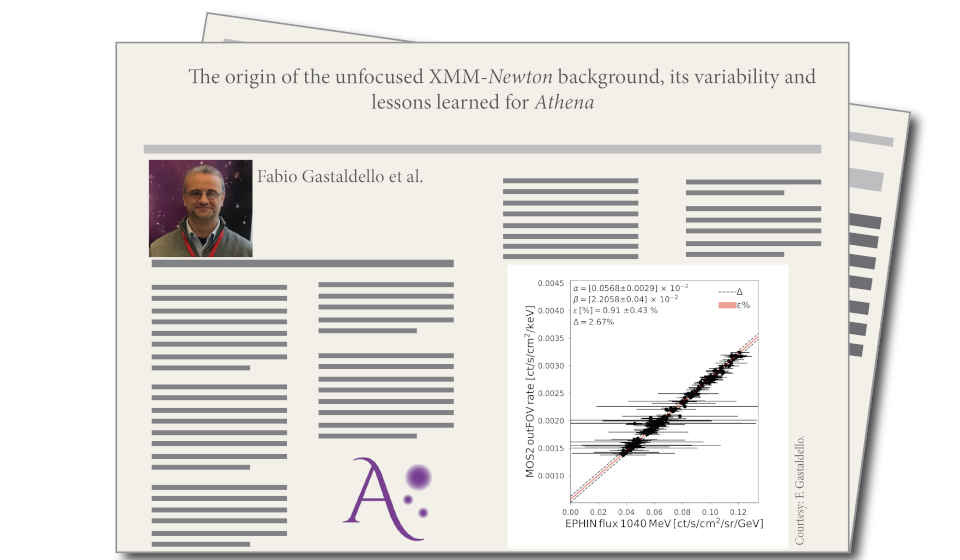
The origin of the unfocused XMM-Newton background...

By Fabio Gastaldello
The instrumental background has always played an important role in X-ray missions, limiting the exploitation of scientific data. In this paper, we analyzed 15 years of data for a total of 255 Ms of the MOS2 detector onboard XMM-Newton. We considered the region of the detector unexposed to the sky thereby excluding the soft proton component concentrated by the telescope (which will be mitigated on Athena by a magnetic diverter) and focus on the component arising from the interaction of Galactic Cosmic Rays (GCRs) with the spacecraft. GCRs are indeed the main contributors to the XMM-Newton background as shown by the tight correlation with 1 GeV protons data of the SOHO EPHIN detector. We were also able to track minor contributions from hard X-ray photons of the Cosmic X-ray Background and from electrons, as shown by the sudden increase and change of spectral shape of the XMM-Newton background when the satellite enters the outer electron belts.
Based on this physical understanding a particle radiation monitor onboard Athena has been proposed and is currently under study. It will be able to track different species of particles in the relevant energy ranges with the necessary accuracy and precision to guarantee the challenging requirement of 2% reproducibility of the background.
The caption of the plot: correlation of the XMM-Newton MOS2 outFOV rate with the SOHO EPHIN proton flux at 1040 MeV. The data and the best-fit relation are shown, together with the shaded area highlighting the intrinsic and total scatter.

